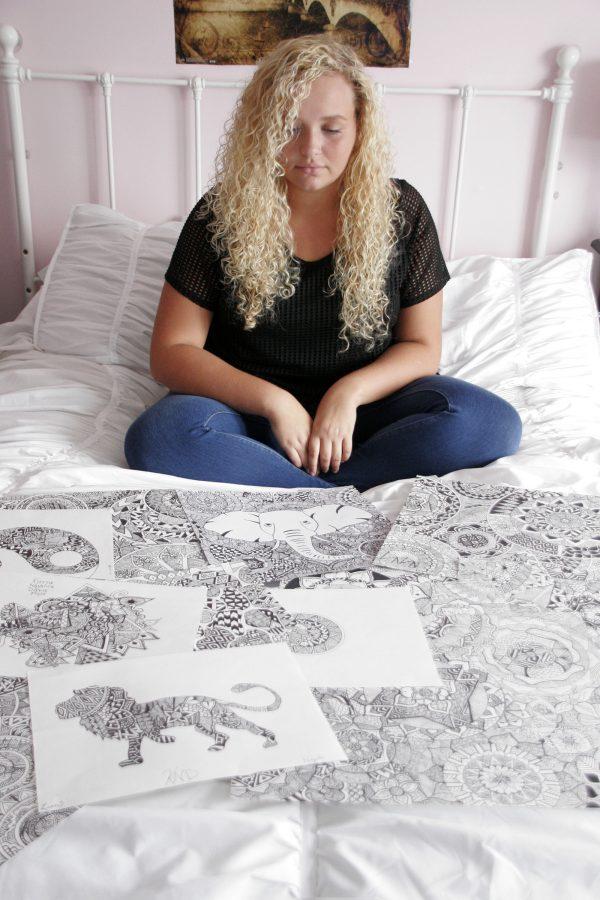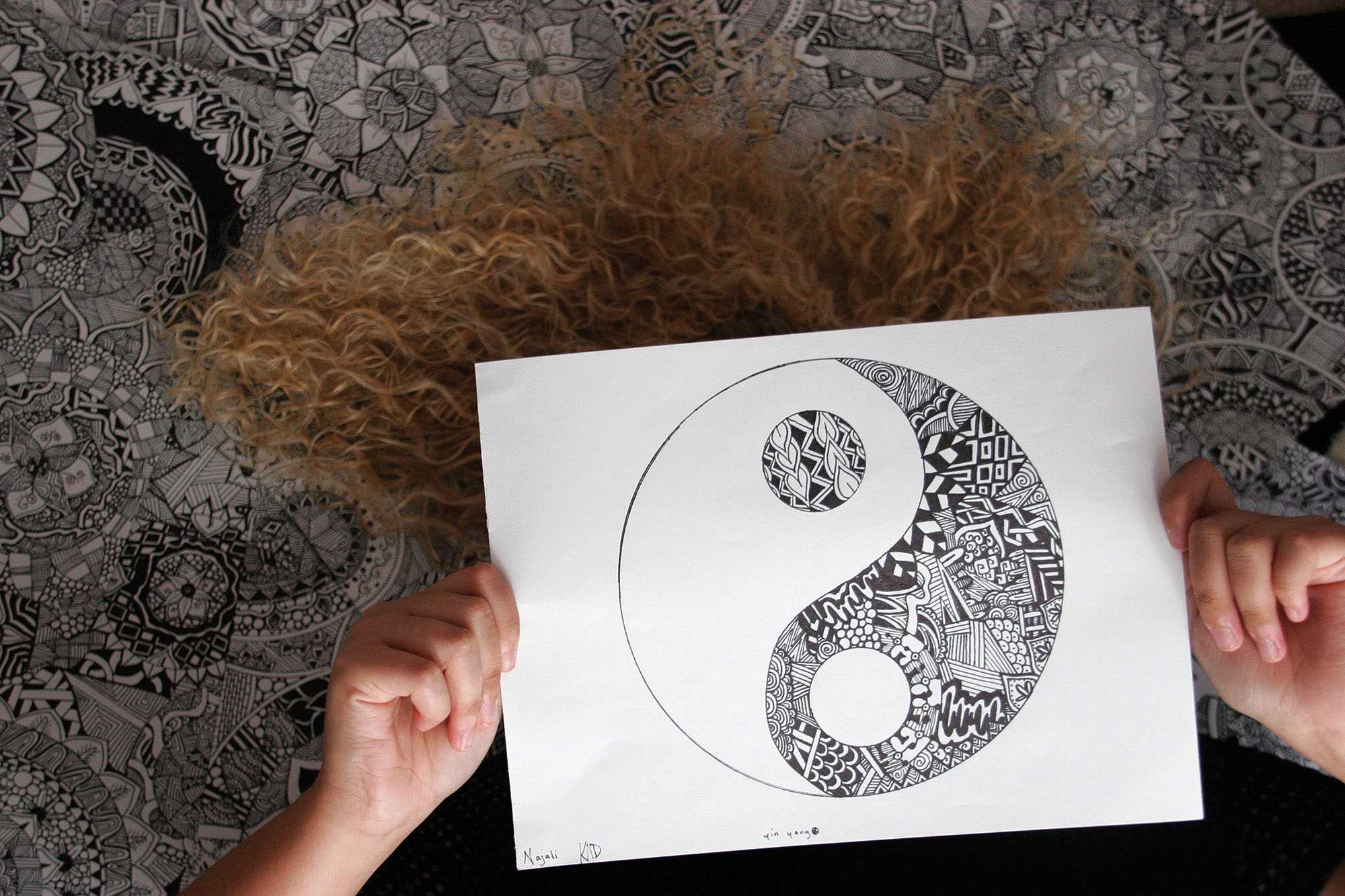By Alyssa Hetterich
She can do nothing more than smile and shake her head at the looks she encounters. Time has taught her patience and tolerance toward the people who cannot see past the color of her skin. It doesn’t bother her—not anymore.
As a child, East junior Kiki Davis could not see who she was supposed to be. An American Girl Doll could never match who she was. No matter how many times she searched the catalog, though she found the tennis-playing and fashion-loving dolls, she never could find the perfect doll to play herself.
Her family reunions always showcase a wide range of color. From the darkest to the lightest, the levels of variance have created a palette that Kiki now uses to reveal parts of herself that can only be reflected on a canvas.
She creates an expressive geometric-type of design called Zentangle with only a Sharpie and repetitive shapes. The art form has seen a resurgence online, where people are finding the complex design forms as a way to relax and express creative individuality.
“It’s set me apart from people in a good way because I am different, and I feel unique,” Davis says. “Not many people have the patience to do [these drawings], and I think it’s special that I do.”
After spending her time doodling on the sides of her paper, Kiki later recognized designs similar to hers on Tumblr that gave her a glimpse of the community dedicated to Zentangle. From there, it spiraled into a passion.
Repeating the same motion for hours on end may seem monotonous, but Rob Davis, Kiki’s father, sees it as a form of relaxation and as an “outlet for her to unwind and be balanced.”
“[Kiki’s art] gives her confidence to deal with being biracial, a [teenager,] a tennis player and a student,” Rob says.

All of these stressors accumulate, though Kiki chooses to ignore the one about which society seems to have the most to say. For Kiki, being biracial is not something she sees as a defining quality, though with her blond hair and blue eyes, it seems to be the topic at the forefront of people’s minds.
During the tennis season’s concussion testing, there hadn’t been a choice for her to select her race, and when she spoke up, the team shared a look of surprise. Not only was there an issue of the program not recognizing more races but also with the fact that her own teammates didn’t quite understand what was happening. For Kiki, going through experiences like this has created a sort of indifference in her reactions.
“People are confused because they don’t understand why I look the way I do, and it’s the same with my friends,” Kiki says.
Kiki’s mother, Beatrice, has seen the reactions toward her children when they tell someone they are a mixed family. Beatrice can recall Kiki being asked to show a picture of the family as proof of their ethnicity.
“A lot of people’s perceptions of being biracial is dark hair and dark eyes, but it’s not always like that,” Beatrice says.
Beatrice is highly attuned to the comments that negate the dynamic of her family because of some insensitivity among her own extended family members, but she doesn’t let that diminish the fact that her children are all unique.
Knowing her child would be an individual, Beatrice gave Kiki a name, Kiera Najalice Davis, that would unify her with her heritage. Giving her a combination of Kiki’s grandmothers’ names, Nancy Jane and Alice, was one way to help bridge the gap between the contrasting cultures.
“I feel very proud [of my family],” Beatrice says. “My side of the family was very prejudiced. People’s closed-mindedness can hurt them in the long run, and I always say you never know what you’re missing out on.”
Whether it be at the grocery store or at school, the family can remember times when the colors of their skins have been the cause of misguided looks and confusion. When Kiki was younger, and her father would take her out, the people passing by would always look for a second longer at the black man and his white little girl.
“Here I am, a man of color with this little blond-haired, blue-eyed baby who’s calling me Daddy,” Rob says. “It was awkward at times, but we moved on.”
The topic of race, while causing debates over the course of the years, has enabled the family to look back and appreciate from where it is they came and also create their own paths of individuality. With her art, Kiki has been able to look beyond the concept of black and white and “see in gray.”
“Kiki is her own person, regardless of her being black or white. We always try to stress to our kids to be an individual,” Rob says. “I know society puts a lot of input on race, but at the end of the day, it’s about love in our family.”








